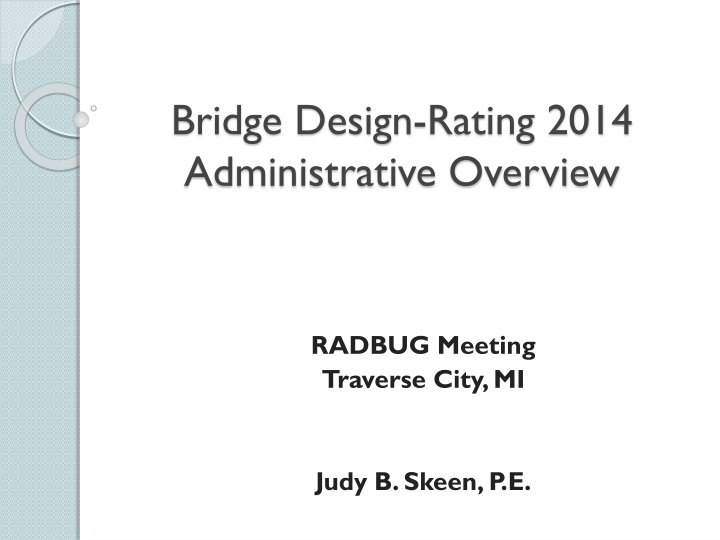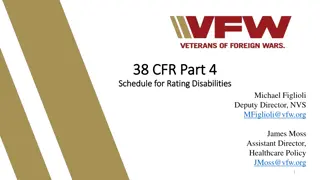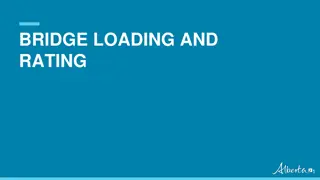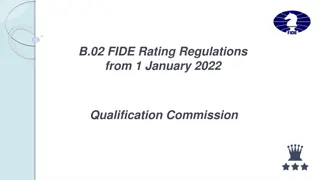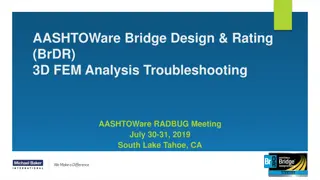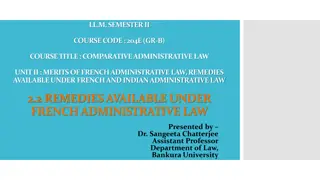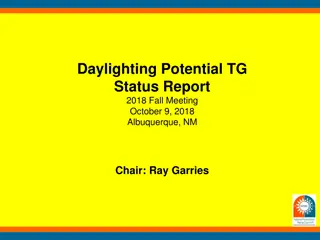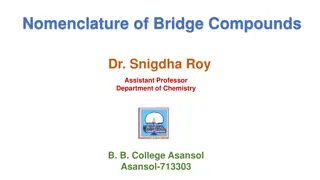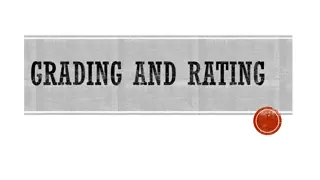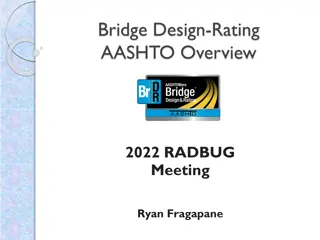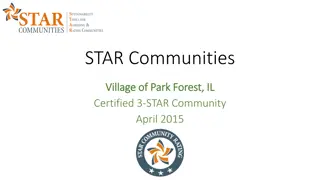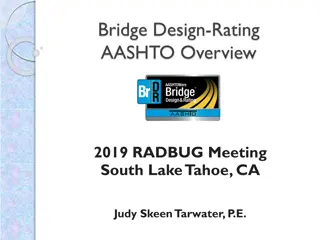Bridge Design Rating 2014 Administrative Overview
This document provides an overview of the Bridge Design Rating for the year 2014, including details on licensees, revenue, expenditures, and the use of AASHTOWare in the bridge design industry. It covers various aspects such as administrative overhead, meeting summaries, and financial breakdowns.
Download Presentation

Please find below an Image/Link to download the presentation.
The content on the website is provided AS IS for your information and personal use only. It may not be sold, licensed, or shared on other websites without obtaining consent from the author.If you encounter any issues during the download, it is possible that the publisher has removed the file from their server.
You are allowed to download the files provided on this website for personal or commercial use, subject to the condition that they are used lawfully. All files are the property of their respective owners.
The content on the website is provided AS IS for your information and personal use only. It may not be sold, licensed, or shared on other websites without obtaining consent from the author.
E N D
Presentation Transcript
Bridge Design-Rating 2014 Administrative Overview RADBUG Meeting Traverse City, MI Judy B. Skeen, P.E.
FY2013 Bridge Design-Rating Revenue Service Units 7% Design Licenses 24% Rating Licenses 69%
FY2013 Bridge Design-Rating Revenue Service Units 10% Design Licenses 24% Rating Licenses 66%
FY2013 Expenditures Task Force Meetings 3% Capitalization 5% Professional Services 2% VO BUG 2.5% AASHTO Admin/ Overhead 7.5% Service Unit Services 1% Maintenance, Support & Enhancements 79%
FY2014 Expenditures Task Force Meetings 3% Capitalization 5% Professional Services 3.5% RADBUG 3% AASHTO Admin/ Overhead 5% Service Unit Services 0.5% Maintenance, Support & Enhancements 80%
AASHTO Administrative Overhead AASHTO Administration & Overhead Staff salaries, benefits, and overhead Contracted Project Manager Proportional share of SCOJD, T&AA and indirect costs Legal Services Technical and Applications Architecture Task Force Technical resource for SCOJD and product task forces Develop and maintain software standards and perform QA Reviews
Why Use AASHTOWare? Incorporates best practices Users share solutions and costs License fees cover overall expenses ensure software products are kept current with technology and functional requirements Each product is self-supporting Non-profit operation Management and oversight by agency (DOT) personnel AASHTO staff project management/assistance
AASHTOWare Program Management AASHTO Board of Directors Executive Director and Staff Executive Committee Special Committee on Joint Development Technical and Applications Architecture Task Force Project Task Forces Product Task Forces TRTs, TAGs and User Groups TRTs and TAGs
AASHTOWare Branding and TradeMarks
Brand Identity AASHTOWare Branding and Trademark Guidelines ensure the strength of our brand Internal Communication Task Force Meeting discussion Task Force / Licensee Emails SharePoint workspace folders and files Internal presentations at Task Force and User Group Meetings User Group websites, etc.
Brand Identity External Communication communication to groups outside the AASHTOWare community, including other AASHTO committees, AASHTO member agencies and the public Presentations Advertisements Product Brochures Product Newsletters AASHTOWare Websites, etc.
Brand Identity - Naming Full Name (External) AASHTOWare Bridge Design & RatingTM Abbreviated Name (Internal only) BrDR If the product name is used repeatedly, the full name should be presented every time.
AASHTOWare Service Units A Brief Overview
AASHTOWare Service Units Agencies can gain convenient access to services provided by the AASHTOWare contractor via service units. AASHTO serves as facilitator by accepting the commitment for contractor-provided services, invoicing and receiving payment from the agency and forwarding the order to the contractor for the appropriate number of service units. AASHTO makes payment for services rendered to the contractor following agency approval of the invoice. Service units remaining at the conclusion of a fiscal year are carried forward into the next fiscal year.
AASHTOWare Service Units Service units are intended to provide consultation and support to incorporate functional enhancements or to assist the licensee in the implementation of AASHTOWare products.
Service Unit Example Activities Service Unit work by the contractor may include the following types of activities: Adding new agency-specific features to the system Developing custom reports Providing specialized training in the use of AASHTOWare products Updating prior releases of product databases
Service Unit Example Activities Supporting common software enhancements unfunded through product licensing fees that will become part of the code base and will be supported by Maintenance, Support and Enhancement (MSE) costs Incorporating analytical or specification engines into AASHTOWare products Funding software development projects / solicitations
Use of Service Units The example activities outlined previously may require more than one Service Unit each, depending on the specific agency requirements. Service Units may not be used to provide reimbursement for travel expenses by agency personnel. Service Units should not be used for work involving major new software development by member agencies. Service Units may be converted to provide additional enhancement funding under the guidance of the Task Force.
Fee for Service Units Service Units can be ordered in unit increments of $11,600 (this fee includes AASHTO administrative costs). Service Units must be paid upon receipt of the invoice. Each service unit provides $10,000 in routine contractor services.
Service Units Fee Distribution 86.2 the percentage directly allocated to the software service provider 8.8 the used to offset AASHTO internal administrative costs staff salaries, benefits, and overhead contracted project manager proportional share of SCOJD, T&AA and indirect costs legal services 5.0 the percentage dedicated to support the Cooperative Development Capitalization Fund as required by governing policy approved by the Board of Directors covers risks associate with software development provides seed money for new projects funds expenses associated with patenting and third-party testing supports product branding / marketing initiatives
Service Unit Process Partnership between requesting agency, Task Force and contractor. Task Force weighs in and approves, ensuring contractor resources are available with no detrimental impact to software development efforts. Analyze opportunities for collaboration between agencies and Task Force product work plans.
Thank You Questions?
